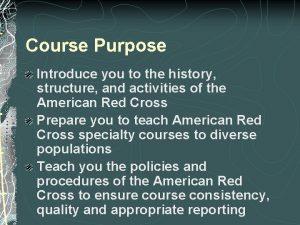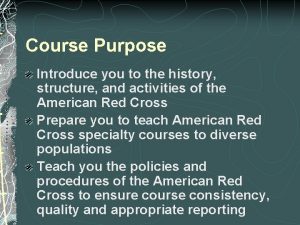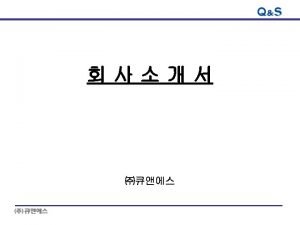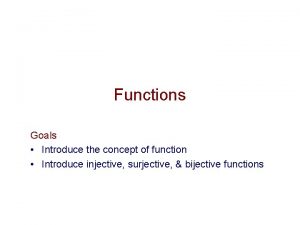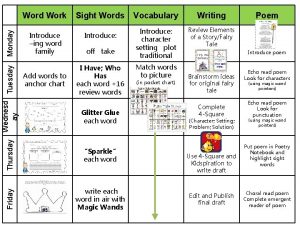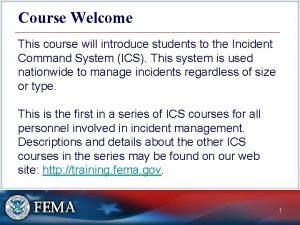Course Purpose Introduce you to the history structure








































- Slides: 40

Course Purpose Introduce you to the history, structure, and activities of the American Red Cross Prepare you to teach American Red Cross specialty courses to diverse populations Teach you the policies and procedures of the American Red Cross to ensure course consistency, quality and appropriate reporting

Learning Objectives Identify the lines of service in the American Red Cross Describe the qualities or characteristics of American Red Cross heroes and relate them to concepts of volunteerism and community involvement Identify key chapter priorities

Learning Objectives Identify appropriate teaching methods and facilitation skills used in American Red Cross courses Describe ways an instructor can respond to individual and group learning needs Recognize standard processes in American Red Cross courses for assessing participant progress

Learning Objectives Respond appropriately to a specific learner concern Identify ways the American Red Cross ensures quality and consistency in course delivery Articulate how you will serve your community

The Red Cross Mission The American Red Cross, a humanitarian organization led by volunteers and guided by its Congressional Charter and the Fundamental Principles of the International Red Cross Movement, will provide relief to victims of disaster and help people prevent, prepare for, and respond to emergencies.

The International Red Cross and Red Crescent Movement is the largest humanitarian, volunteer organization in the world, with 175 member countries.

Services of the American Red Cross Disaster and Emergency Services Armed Forces Emergency Services Health and Safety Services Community Services International Services Biomedical Services

Guiding Principles Humanity Impartiality Neutrality Independence Voluntary Service Unity Universality

Structure of the American Red Cross Board of Governors National Headquarters Local Chapter Board Local Red Cross

Successful Completion of the Fundamentals of Instructor Training requires: Attendance at all class sessions Participation in all class exercises and activities

Instructor Candidate Training Instructor responsibilities The Instructor: Plans to teach, conducts, and evaluates a course. Evaluates participants’ eligibility for course completion certificates.

Instructor Candidate Training Instructor Responsibilities (cont. ): Maintains complete, accurate course reports and records. Demonstrates appropriate qualities as a Red Cross representative and role model.

Definition of Learning Process of Change Acquisition of new knowledge, skills, or attitudes Comes from study or life experiences Occurs over a period of time Lifelong process

Types of Learning Affective Attitude and/or behavior change Cognitive New facts, concepts and skills Psychomotor New motor skills

MARS Motivation Association Repetition Senses (use of)

Motivation to Learn Reasons people take Red Cross courses? Job skills Support of safe leisure-time activities Life problems or changes General interest Self-improvement External requirement for

Learning, A Social Process People are taught in groups Learn by reading, watching videos, observing others, listening to opinions or facts, and participating in group activities. Accepting change: ideas, attitudes or behaviors. Anxiety from accepting change? Sharing experiences – examples?

Learning Differences People learn in different ways and at different speeds. Teaching methods need to accommodate learning differences. Ask questions, observe, encourage students to ask questions. Generally, a student will learn and remember better when instruction fits his or her learning style.

Student Characteristics Education, reading ability, language Cultural Background Experiences Interest Coordination, strength, size Attitude Health and Physical Fitness

Physical Environment Optimal learning takes place in an environment as free as possible from factors that interfere with learning. Environmental factors to consider when teaching: Location of classroom Size of class

Physical Environmental factors (cont. ) Class setting – acoustics, lighting, temperature, wall colors, and clutter. Interruptions or distractions – noise, weather, and the frequent movement of people or objects.

Being an Effective Instructor Your most important role as a Red Cross instructor is to help students learn. Encourage students to share the responsibility for learning. Asking questions Encouraging discussion in class Encouraging each student to actively participate in course exercises, skills practice, and other activities

Characteristics of an Effective Instructor Good communication skills, including listening Knowledge of the subject Positive attitude Appropriate attire and professional appearance Patience and flexibility Professional behavior Sense of humor

Communication Four elements to communication: Sender Receiver Message Medium or channel

Things to Consider in Verbal Communication Volume Rate of delivery Pronunciation Clear and simple language Enthusiasm Value-laden statements Mixed messages

What can an instructor do to check if participants understand the information that has been communicated? Asking for questions about what has been said. Observing facial expressions or body language that indicates puzzlement. Asking students to demonstrate skills that have been demonstrated to them. Asking open-ended questions that encourage students to display their understanding of

Nonverbal Communication Nonverbal communication can accompany the spoken word or can communicate a message alone. Only 7% of the meaning of a message is conveyed through the actual words!

Nonverbal Communication Examples of nonverbal communication: Facial expressions Body language, I. e. posture and movements Tone of voice Eye contact

What are examples of nonverbal communication that may enhance an instructor’s communication with a class? Smiling, friendly demeanor Nodding, providing positive affirmation to participants Making eye contact with participants Leaning toward the participants Open arms, rather than crossing arms Moving among participants during activities

Common Instructional Strategies used in American Red Cross courses Presenting information Facilitating discussions Facilitating task groups Teaching psychomotor skills

Facilitating Discussions and Task Groups Push – When information flows mostly from the facilitator to participants Pull – When the facilitator engages participants in interactive exercises, asking and answering questions, or using other processes that actively involve participants in their own learning.

Facilitating Discussions and Task Groups Balance – Ensuring that neither push nor pull overtakes the class so that neither you nor your participants are talking too much. Balancing may involve correcting misinformation, keeping on topic, keeping a nonjudgmental atmosphere, managing how participants speak to one another, and minimizing distractions.

Teaching Psychomotor Skills Direction and instruction Ample practice time Reinforcement Corrective feedback Encouragement

Managing the Classroom Bridging Assigning tasks Summarizing Intervening Climate setting

Providing Feedback In giving corrective feedback: Identify the error or behavior in a nonjudgmental way Define the results Provide or describe the corrective action or lead the participant to provide his or her own correction

Assessing Progress Learning is occurring Learning objectives being met Participants applying knowledge and skills

Standards of Quality, consistency, and standardized delivery Lesson plans based on well-defined objectives Instructor follows lesson plan and does not stray from course content and learning objectives

Authorized Providers Outside companies, organizations, or individuals that provide American Red Cross instructional programs

Ethical Behavior Tell the truth Keep promises Respect individuals Be fair

Five Key Commitments Organization Customers Task People Self
 Sample prayer before meeting
Sample prayer before meeting Let's me introduce myself
Let's me introduce myself Good morning lady and gentleman
Good morning lady and gentleman How to introduce yourself in french
How to introduce yourself in french I will introduce you to my boss this week
I will introduce you to my boss this week One and half brick wall
One and half brick wall Course number and title
Course number and title Chaine parallèle muscle
Chaine parallèle muscle Ap world history course and exam description
Ap world history course and exam description Higher history course specification
Higher history course specification Hát kết hợp bộ gõ cơ thể
Hát kết hợp bộ gõ cơ thể Lp html
Lp html Bổ thể
Bổ thể Tỉ lệ cơ thể trẻ em
Tỉ lệ cơ thể trẻ em Gấu đi như thế nào
Gấu đi như thế nào Tư thế worm breton
Tư thế worm breton Hát lên người ơi
Hát lên người ơi Các môn thể thao bắt đầu bằng từ đua
Các môn thể thao bắt đầu bằng từ đua Thế nào là hệ số cao nhất
Thế nào là hệ số cao nhất Các châu lục và đại dương trên thế giới
Các châu lục và đại dương trên thế giới Công của trọng lực
Công của trọng lực Trời xanh đây là của chúng ta thể thơ
Trời xanh đây là của chúng ta thể thơ Mật thư anh em như thể tay chân
Mật thư anh em như thể tay chân 101012 bằng
101012 bằng Phản ứng thế ankan
Phản ứng thế ankan Các châu lục và đại dương trên thế giới
Các châu lục và đại dương trên thế giới Thơ thất ngôn tứ tuyệt đường luật
Thơ thất ngôn tứ tuyệt đường luật Quá trình desamine hóa có thể tạo ra
Quá trình desamine hóa có thể tạo ra Một số thể thơ truyền thống
Một số thể thơ truyền thống Cái miệng xinh xinh thế chỉ nói điều hay thôi
Cái miệng xinh xinh thế chỉ nói điều hay thôi Vẽ hình chiếu vuông góc của vật thể sau
Vẽ hình chiếu vuông góc của vật thể sau Biện pháp chống mỏi cơ
Biện pháp chống mỏi cơ đặc điểm cơ thể của người tối cổ
đặc điểm cơ thể của người tối cổ V cc
V cc Vẽ hình chiếu đứng bằng cạnh của vật thể
Vẽ hình chiếu đứng bằng cạnh của vật thể Fecboak
Fecboak Thẻ vin
Thẻ vin đại từ thay thế
đại từ thay thế điện thế nghỉ
điện thế nghỉ Tư thế ngồi viết
Tư thế ngồi viết Diễn thế sinh thái là
Diễn thế sinh thái là









































